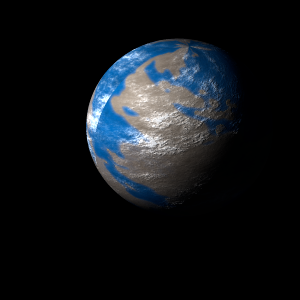|
|
Space Astro
|
Info for exoplanet "Teabauti-pan"
| Scientific (actual) data |
|---|
| Name | Kepler-319 d |
| Planet status | Confirmed |
| Radius | 0.204 |
| Orbital period | 31.7819 |
| Semi major axis | 0.191 |
| Discovered | 2014 |
| Updated | 2021-02-05 |
| Tconj | 2454970 |
| Impact parameter | 0.55 |
| Publication | Announced on a website |
| Detection type | Primary Transit |
| Alternate names | 2MASS J19151486+3946143 d, K01805.02, KIC 4644952 d, KOI-1805 d, KOI-1805.02, WISE J191514.86+394614.3 d |
| Star name | Kepler-319 |
| Right ascension | 288.81° |
| Declination | 39.77° |
| Mag j | 12.631 |
| Mag h | 12.315 |
| Mag k | 12.208 |
| Star distance | 510.83 |
| Star metallicity | 0.487 |
| Star mass | 1.29 |
| Star radius | 0.9 |
| Star temperature | 5526 |
| Star alternate names | 2MASS J19151486+3946143, KIC 4644952, KOI-1805, WISE J191514.86+394614.3 |
| Wikipedia article | Kepler-319 d |
Back
| |
| Fictional info (?) |
|---|
| Suggested name | Teabauti-pan |
| Planet type | Planet |
|
| Atmosphere | Hydrogen | 46% |
| Nitric oxide | 34% |
| Formaldehyde | 19% |
| Atmospheric pressure | 5 bar |
 |
| No known satellites |
| Google search for Teabauti-pan |
|
Website by Joachim Michaelis
|
|
|
|